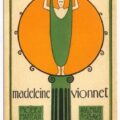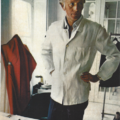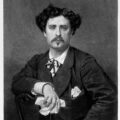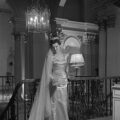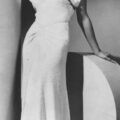Incredible Couturiers Alexander McQueen
March 6, 2015Alexander McQueen was considered the bad boy of British fashion. It’s his official title, “Alexander McQueen, the Bad Boy of British Fashion”. John Paul Gaultier gets to be an “Enfant Terrible” because he’s French and cheeky. I’m not sure what the term for Raf Simons is, with his new willy flashing outfits – he’s Belgian so perhaps he’s an “Enfant Terrible” too. Obviously, John Galliano, though British is not just bad but positively wicked. But that’s in his personal life. Thierry Mugler has his fetish inspired outfits, Gareth Pugh too, but I think the reason that McQueen still wins is that his work was executed with such an affinity for great materials, such precise cutting. Vivienne Westwood comes close to him but is too establishment now.
Alexander McQueen
Part 1
I regard McQueen as an artist, his catwalk shows as huge performance pieces. The models were just actors on his stage, and the clothes, although often desirable, were costumes or sometimes props. It was the spectacle he was after, and he worked hard on his shock value.
The clothes themselves were usually immaculately tailored, in luxurious fabrics like wool, silk and leather. The power came from unusual proportions, like the infamous bumster, and from details like animal horns sprouting from shoulders. There was a drama and theatricality to his clothes, and his best design was influenced by diverse sources such as Noh theatre, Hitchcock heroines and Mughal Princesses. He frequently collaborated with milliner Philip Treacy and jeweler Shaun Leane, both artists who understood his aesthetic and were able to bring it to life with their dramatic accessories.
He knew how to cut clothes, but having worked in a costumiers as well as on Savile Row when he was training, he looked at his garments in a different way, maybe not as clothes but costumes or perhaps props. A catwalk show can be an opportunity for a great spectacle, a performance that has nothing to do with buying something to wear. In fact, some of his early collections didn’t sell at all, a situation which he claimed he engineered deliberately.
Yes, I know that “claimed” sounds derogatory, but the stories of the larger than life McQueen tend to be larger than life, including the ones he told himself. He boasted that he had scrawled obscenities into the lining of the Prince of Wale’s suit when he worked for his tailor. The tailor, mortified, recalled anything that he might have worked on. Nothing was found and it was McQueen’s turn to be mortified: he hated the story being retold.
It’s also interesting that he didn’t particularly stand out as a student at St Martins. His tutor remembered that he was inquisitive, and asked a lot of questions. His end of year show was not the main event, and if Isabella Blow hadn’t run up to him afterwards, demanding to buy the lot, and after that stuck by his side constantly pushing and inspiring him, suggesting themes for shows, introducing him to other creatives and buying his work, perhaps he wouldn’t have had the impetus to achieve the heights he did. McQueen was restless when he started out, working for four different companies before he was 21, and who knows whether he would have veered off course again without “this nutty lady” as he describes her beside him?
Alexander McQueen
Philip Treacy headgear for Alexander McQueen
Leather jacket with horns, AW97
Alexander McQueen and Isabella Blow by Tim Walker







